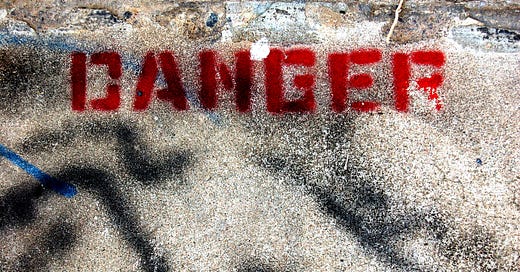Risk is probabilistic. It is the possibility of an event happening. However, risk in itself is not bad.
My Professor1 says, “risk is actually the uncertainty of outcomes, both good as well as bad. In the context of investments, risk is the uncertainty of future returns.”
In investing, risk and volatility are almost analogous. Volatility is the rate at which the price of an assets changes—for example, Stock A and B.
Stock A moves from $5 to $10 and then back to $7 in a day. Stock B moves the same but in 7 days. Then stock A is said to be more volatile than stock B, everything else equal.
What does this mean?
When an asset is volatile, it typically means more risk is attached to the asset. Remember, risk is the uncertainty of outcomes. This could be good or bad. A less risky investment will typically have less volatility.
When prices move rapidly(in either direction), it means there is either a significant upside or a big downside. When an asset moves slowly, the asset has less upside and downside than the other asset.
For example, the crypto space is very volatile; prices move up and down at very high percentages. Some coins drop a whopping 40% in a day!!
This is usually unheard of for stocks. Typically, stocks are less volatile and are more mature than crypto. Matured assets often have low volatility and fewer upside.
Stocks are halted when they move that much within a short period. This is known as circuit breaking.
Circuit breakers are temporary measures that halt trading to curb panic-selling on stock exchanges.
There are three levels of a circuit breaker in the US, which are set to halt trading when the S&P 500 Index drops 7%, 13%, and 20%.
Circuit breakers for individual securities are triggered whether prices move up or down.
Levels 1 and 2 are triggered when the S&P 500 drops 7% and 13%, respectively. Trading is halted for 15 mins. When it drops 20%, a level 3 circuit breaker is triggered, and trading is stopped for the day.
Trading individual stocks are halted when they trade for 10% up or down within 5 minutes.
When individual securities (individual stocka and ETF’s) go up or down more than 10% trading is halted.2
Trading is halted (all securities) only when the S&P500 drops 7%, 13%, and 20%.
Readings
I went through the personal website of a partner at Sequoia Capital, and what I found interesting was his love for family. Here is one thing I found resonating from one of his writings.
Most people think of demanding and supportive as opposite ends of a spectrum. You can either be tough or you can be nice. But the best leaders don’t choose. They are both highly demanding and highly supportive. They push you to new heights and they also have your back.
What I’ve come to realize over time is that, far from being contradictory, being demanding and supportive are inextricably linked. It’s the way you are when you believe in someone more than they believe in themselves.
Newsletter Recommendation
Hameed’s Newsletter: He writes about personal stories and lessons. He writes them so well that I look forward to reading them every Sunday.
Associate Prof. Ramabhadran Thirumalai
This is subjected to other parameters such as the exchange the security is listed and the security price.



